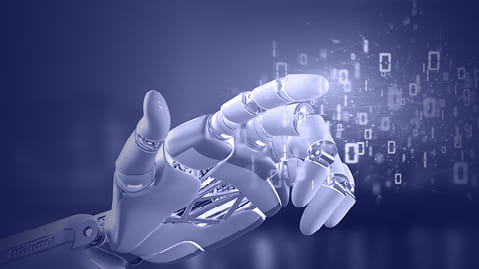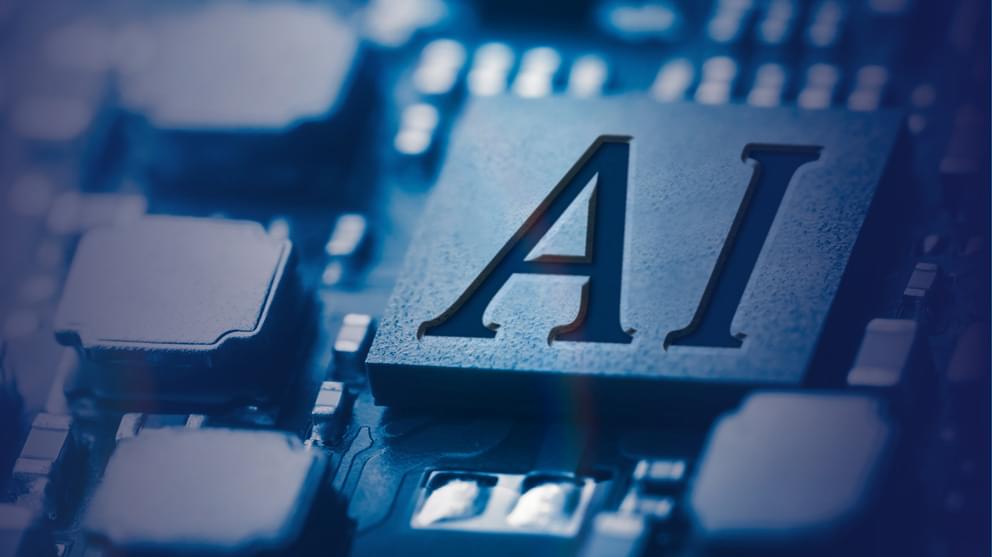- Home
- News & insights
- Insights
- Artificial Intellige…

Artificial Intelligence Act
Here you'll find all relevant and recent updates on the AI Act.
Introduction on the AI Act of the European Union
In April 2021, the European Commission presented its proposal for a Regulation of the European Parliament and of the Council laying down harmonized rules on Artificial Intelligence (AI), also known as the AI Act of the European Union. Three years later, the legislative process is complete. The EU AI Act is regarded as a fundamental cornerstone for the regulation of artificial intelligence in the EU. The Council of the EU then approved the AI Act on May 21, 2024. The AI Act entered into force on August 1, 2024.
Here, our AI Lawyers provide relevant background and information as well as the current status on the AI Act proposal:
- An article feed with relevant articles and comments,
- the Taylor Wessing legislation tracker,
- links to all relevant documents,
- graphic overviews on specific AI Act topics,
- frequently asked questions and answers,
- as well as relevant links for other information and further research.
We advise our clients on IT, telecommunications and data protection law and have particular experience in legal issues relating to digitalization and artificial intelligence.
Detailed insights from our legal experts on the AI Act

AI, energy and ESG: regulatory considerations for organisations
by multiple authors

The EU AI Act in practice: a deep dive into the new serious incident reporting obligations

The final GPAI Code of Practice: Key insights, unresolved questions, and parallel regulatory tracks
by multiple authors

Training of AI models with user data - Decision of the Higher Regional Court of Cologne in the Meta case
by Alexander Schmalenberger, LL.B. and Dr. Jakob Horn, LL.M. (Harvard)

New Consumer Credit Directive: Comprehensive Changes for E-Commerce, BNPL, AI, and Data Protection
by Dr. Verena Ritter-Döring and Alexander Schmalenberger, LL.B.
The AI Act of the European Union: Legislation tracker
The AI Act was adopted as a European regulation as part of an ordinary legislative procedure in accordance with Art. 294 TFEU. The AI Act proposed by the European Commission had to be adopted jointly by the European Parliament and the Council of the EU.
The Council published its position on the draft proposal back in December 2022. The European Parliament also subsequently drew up a position in its committees. In the case of the AI Act, the Internal Market Committee (IMCO) and the Committee on Civil Liberties, Justice and Home Affairs (LIBE) took the lead. In addition, other committees were responsible for individual topics and articles within the AI Act. Following the revision of the Commission's draft, the plenary voted on the legislative text. The Commission, Council and Parliament then began the final negotiations (known as the "trialogue") on the basis of the parliamentary proposal. In December 2023, the parties involved then reached a provisional agreement on a final draft, which was published in January 2024. In February 2024, the Member States and the parliamentary committees approved this draft.
The final vote in the European Parliament took place on March 13, 2024. The Council of the EU approved the AI Regulation on May 21, 2024. The AI Act was then published in the Official Journal of the EU on July 12, 2024. The AI Act entered into force on August 1.
Below you will find all relevant documents in our legislation tracker, which you can use to follow the legislative process of the AI Act.
|
Date |
Document |
Document Type |
Link |
Description |
|---|---|---|---|---|
| 12 July 2024 |
European Parliament and Council of the EU |
Official announcement | Regulation (EU) 2024/1689 of the European Parliament and of the Council of 13 June 2024 laying down harmonised rules on artificial intelligence and amending Regulations (EC) No 300/2008, (EU) No 167/2013, (EU) No 168/2013, (EU) 2018/858, (EU) 2018/1139 and (EU) 2019/2144 and Directives 2014/90/EU, (EU) 2016/797 and (EU) 2020/1828 (Artificial Intelligence Act) |
On 27 April 2023, the Parliament agreed on a draft. The key committees voted on the draft on 11 May 2023. The final vote in plenary took place in June 2023. A final version of the text was leaked in January 2024. In March 2024 a final numbered version was published.
|
Date |
Document |
Document Type |
Link |
Description |
| 06 March 2024 | Consolidated version | Consolidated version | EN | Version with final wording and final numbering |
| 22 January 2024 | Voting version | Consolidated version | EN | Version for further votes in the relevant parliamentary committees. Contains the text agreed by the Parliament and Council negotiators. |
| 11 May 2023 | Position adopted by the key committees (IMCO and LIBE) | Position on Proposal |
EN | The Parliament also proposed amendments in its position on the legislative proposal. In particular, the heated discussions about general-purpose and generative AI – most prominent example: ChatGPT – gave rise to intensive revisions. First, the AI definition was brought in line with the OECD definition. Also, further AI practices were prohibited: Biometric identification systems, for example, are to be completely banned – contrary to what was originally proposed – without providing for exceptions for cases of terrorist attacks or kidnapping, for example. General-purpose AI and generative AI are to be regulated according to a tiered approach. According to this, the main responsibility should first fall on economic actors who integrate such AI into their applications. Providers of general-purpose AI should only have a supporting role with transparency obligations. In the case of generative AI, such as ChatGPT, on the other hand, a summary of the proprietary training data must be provided and it must be disclosed that the text is AI-generated. For classification as a high-risk AI system, it should now additionally be a condition that the system poses a significant risk to people’s health, safety or fundamental rights. |
|
Date |
Document |
Document Type |
Link |
Description |
| 22 January 2024 | Voting version | Four-column document | EN | Version for the votes in the Council on 24 January 2024 and 2 February 2024. Contains the original version of the Commission's proposal for the AI Regulation, the amendments requested in accordance with the negotiating positions of the Council and Parliament and the text of the negotiators' agreement. |
| 06 December 2022 | General Approach |
Final Position on Proposal | EN | In its position, the Council has proposed changes to the original proposal of the Commission. For example, the position includes a restricted definition of AI. In addition, AI systems that serve military purposes or national security, as well as AI use by private individuals, are to be excluded from the scope of application. Social scoring should also be prohibited for private individuals – and not only for public authorities. But the list of high-risk AI systems has also been adjusted: For example, AI systems for the detection of deepfakes by law enforcement authorities and for crime analysis and evaluation of large data sets are no longer to be classified as high-risk. On the other hand, AI systems for risk assessment in life and health insurance and for use as security components in critical digital infrastructure were added as high-risk AI systems. |
| 25 November 2022 | Position on Proposal | Note on General Approach from Permanent Representatives Committee to Secretariat of the Council | EN |
|
Date |
Document |
Document Type |
Link |
Description |
| 28 September 2022 | Proposal AI Liability Directive | Legislative Proposal |
EN | The proposed directive aims to adapt the civil-law rules of non-contractual liability to the AI age. In particular, it provides for disclosure obligations for evidence and rebuttable presumptions. These are intended to take effect when obligations under the AI Act are breached and, in this way, improve the chances of success for harmed parties to claim damages. The AI Liability Directive is thus closely intertwined with the AI Act. |
| 21 April 2021 |
Proposal AI Act |
Legislative Proposal | EN |
The legislative proposal divides AI systems into four different risk categories according to its risk-based approach. Based on this, the proposal contains regulations on bans, lays down strict requirements and obligations for high-risk AI systems and provides for relatively lenient transparency obligations for other AI systems. In this way, the development, putting onto the market and use of AI systems in the European Union are to be regulated in a harmonised manner. |
| 21 April 2021 | Proposal AI Act Annex | Legislative Proposal | EN | The annexes contain further specifications that are referred to in the provisions of the regulation. For example: the techniques and concepts of Artificial Intelligence relevant to the AI Act, a list of high-risk systems or specifications on the conformity assessment. |
Other relevant documents on the AI Act
|
Date |
Document |
Document Type |
Link |
Description |
| 29 December 2021 | European Central Bank I European Central Bank II |
Opinion | EN EN |
|
| 02 December 2021 | European Committee of the Regions | Opinion | EN |
|
| 22 September 2021 | European Economic and Social Committee (EESC) | Opinion |
EN |
|
| 18 June 2021 | European Data Protection Board (EDPB) and the European Data Protection Supervisor (EDPS) | Opinion | EN | |
| 21 April 2021 | Final Impact Assessment (EU Commission) |
Impact Assessment | EN | |
| 23 July 2020 | Inception Impact Assessment (EU Commission) |
Impact Assessment | EN |
|
| 19 February 2020 | White Paper (EU Commission) | EN | ||
| 08 April 2019 | European Commission about Guidelines for Trustworthy Artificial Intelligence | Guidelines | EN | |
| 07 December 2018 | Coordinated Plan for Artificial Intelligence of the European Commission Annex to the Coordinated Plan |
Coordinated Plan | EN EN |
|
| 25 April 2018 | AI Strategy of the European Commission | Strategy | EN |
|
Date |
Document |
Document Type |
Link |
Description |
| 25 November 2022 | Statement by Germany on General Approach of the Council of the EU | Note | EN | |
| November 2022 | Intellera Consulting | Report | EN | Estimating compliance costs for a small-medium AI provider |
| November 2022 | Open Loop (supported by Meta) |
Report | EN | Testing of some articles of the AI Act with companies around the world to assess how understandable, feasible, and effective they are |
| 05 October 2022 | European Digital SME Alliance | Opinion | EN | |
| 05 October 2022 | European Association of the Machine Tool Industries and Related Manufacturing Technologies (CECIMO) | Opinion | EN | |
| 26 September 2022 | Expert Statements in German Parliament | Opinion | DE | |
| 19 September 2022 |
German Opinion | Opinion | EN | |
| 30 March 2022 | German Insurance Association | Opinion | DE | |
| 25 November 2021 | German Bar Association | Opinion | DE | |
| 10 August 2021 | German Banking Industry | Opinion | DE | |
| 06 August 2021 | German Electro and Digital Industry Association | Opinion | EN | |
| 06 August 2021 | German AI Association | Opinion | EN | |
| 04 August 2021 | German Medical Technology Association | Opinion | DE | |
| 30 June 2021 | German Women Lawyers Association | Opinion |
AI Act – Overviews
FAQ on the AI Act (created with the help of ChatGPT)
According to the AI Act, an AI system is defined as "a machine-based system designed to operate with varying levels of autonomy, that may exhibit adaptiveness after deployment and that, for explicit or implicit objectives, infers, from the input it receives, how to generate outputs such as predictions, content, recommendations, or decisions that can influence physical or virtual environments."
This definition corresponds to the definition of the Organization for Economic Cooperation and Development (OECD). This use of an internationally developed and recognized definition can promote its acceptance and harmonization.
The AI Act is a proposed regulation by the European Union that aims to establish a legal framework for the development, deployment, and use of AI systems in the EU. The proposed regulation seeks to ensure that AI systems used in the EU are transparent, reliable, and safe, and that they respect fundamental rights and values.
The AI Act covers a wide range of AI applications, including but not limited to:
- Biometric identification and categorization systems
- Critical infrastructure, such as transport and energy systems
- Educational and vocational training systems
- Employment, workers, and human resources management systems
- Law enforcement and judicial systems
- Marketing and advertising systems
- Recruitment and human resources systems
- Social scoring systems
The regulation governs a variety of aspects related to the development, deployment and use of AI systems, including:
- Classification of AI systems: The regulation distinguishes between different types of AI systems, depending on the level of risk they pose. High-risk AI systems, such as autonomous vehicles or credit scoring systems, are subject to stricter requirements and controls than lower-risk AI systems, such as chatbots.
- Requirements for AI systems: The regulation sets out minimum requirements that AI systems must meet in order to be safe, transparent, reliable and accountable. These include requirements for data quality, human supervision and control, transparency and traceability of decisions, and compliance with ethical principles.
- Conformity assessment and certification: The regulation provides that high-risk AI systems must be subject to conformity assessment and certification to ensure that they meet the requirements and standards of the regulation.
- Responsibility and sanctions: The regulation stipulates that the responsibility for the use of AI systems lies primarily with the providers and deployers of the systems and provides for possible sanctions for violations of the regulation.
- Monitoring and oversight: The regulation requires EU Member States to establish appropriate monitoring and oversight authorities to ensure compliance with the requirements and standards of the regulation.
The AI Act also establishes a European Artificial Intelligence Office, which, together with the Member State authorities, which will be responsible for overseeing the implementation and enforcement of the regulation across the EU.
The AI Act will affect a wide range of stakeholders involved in the development, deployment, and use of AI systems in the EU. In particular, the AI Act will be relevant for the following stakeholders:
- AI developers and providers: Companies and organizations that develop or provide AI systems in the EU will need to comply with the requirements and obligations set out in the regulation.
- Deployers and operators of AI systems: Companies and organizations that use or operate AI systems in the EU will need to ensure that they comply with the requirements and obligations set out in the regulation.
- Regulators and supervisory authorities: National authorities in the EU will be responsible for enforcing the regulation and ensuring that AI systems used in their respective countries comply with the requirements and obligations set out in the regulation. The European Artificial Intelligence Office will provide guidance and support to national authorities in this regard.
- Consumers and citizens: The regulation aims to protect the rights and interests of consumers and citizens in the EU who interact with AI systems. This includes ensuring that AI systems are transparent and that users are informed about the use of AI in their interactions with companies and organizations.
The AI Act is primarily aimed at regulating the development, deployment, and use of AI systems in the EU. However, its impact is likely to be felt beyond the borders of the EU, given the global nature of the AI industry and the potential for AI systems to be used across multiple jurisdictions.
There are a few reasons why the AI Act may be relevant outside the EU:
- Compliance with the AI Act may be required for companies that operate in the EU or provide AI systems to customers in the EU. Companies based outside the EU that provide AI systems to EU customers will need to ensure that their systems comply with the requirements and obligations set out in the regulation.
- The AI Act may influence the development of AI regulations in other jurisdictions. Other countries and regions may look to the EU's regulatory approach as a model for their own AI regulations, or may seek to align their regulations with the EU's standards in order to facilitate cross-border trade and cooperation.
- The AI Act's focus on ethical and trustworthy AI may set a precedent for global AI governance. The regulation's emphasis on ensuring that AI systems respect fundamental rights and values, such as human dignity and privacy, reflects a growing global consensus on the need for ethical and responsible AI.
The European Commission proposed the AI Act in April 2021 and it had to be reviewed and approved by the European Parliament and the Council of the EU before it could become law.
On 6 December 2022, the Council of the EU published its general approach regarding the AI Act proposal. During the last votes in the Parliament, heated discussions about new, disruptive AI applications on the market – namely: ChatGPT – caused delays in the process. On 27 April 2023, the Parliament agreed on a draft of its position. The leading committees voted on the draft on 11 May 2023. The final vote in plenary took take place in June 2023. In the trilogue process, the parties involved unofficially agreed on a final draft in December 2023. The Member States and the parliamentary committees involved approved this draft in February 2024. The final vote in the European Parliament took place on 13 March 2024. The AI Act was published in the Official Journal of the EU on July 12, 2024 and entered into force on August 1. The standards will become fully applicable 24 months after entry into force, although a graduated procedure is provided for some AI systems, which makes some regulations applicable even earlier:
- 6 months after entry into force (February 2, 2025): Shutdown of prohibited AI systems.
- 12 months after entry into force (August 2, 2025): Obligations for GPAI systems become applicable, with the exception of Art. 101 AI Regulation.
- 24 months after entry into force (August 2, 2026): All provisions of the AI Act become applicable, in particular those for high-risk AI systems under Annex III, with the exception of the obligations for high-risk AI systems under Annex II.
- 36 months after entry into force (August 2, 2027): Obligations for high-risk AI-systems according to Annex II become applicable.
- 72 months after entry into force (August 2, 2030): Applicable for high-risk AI systems intended to be used by public authorities.
- End of 2030 (December 31, 2030): Applicable to AI systems that are components of the large-scale IT systems established by legal acts listed in an Annex to this Act (e.g. Schengen Information System) and placed on the market or put into operation before August 2, 2027.
Relevant Links around the AI Act
- The EU's own legislation tracker: “Procedural overview of the AI Act proposal”
- The Artificial Intelligence Act: "Up-to-date developments and analyses by the Future of Life Institute"
- Digitizing Europe: Documents & Timelines: „Overview from Kai Zenner, Head of Office and Digital Policy Adviser for MEP Axel Voss (EPP Group)”
- Expert explainer: The EU AI Act Proposal “Description of significance, scope and main points of the AI Act by the Ada Lovelace Institute”
Contact our AI Lawyers
Featured insight
Technology, media & communications
Metaverse, Mixed Reality and a whole new business world?
- Briefing
- by Janine Krupa-Soltane, LL.M.


















